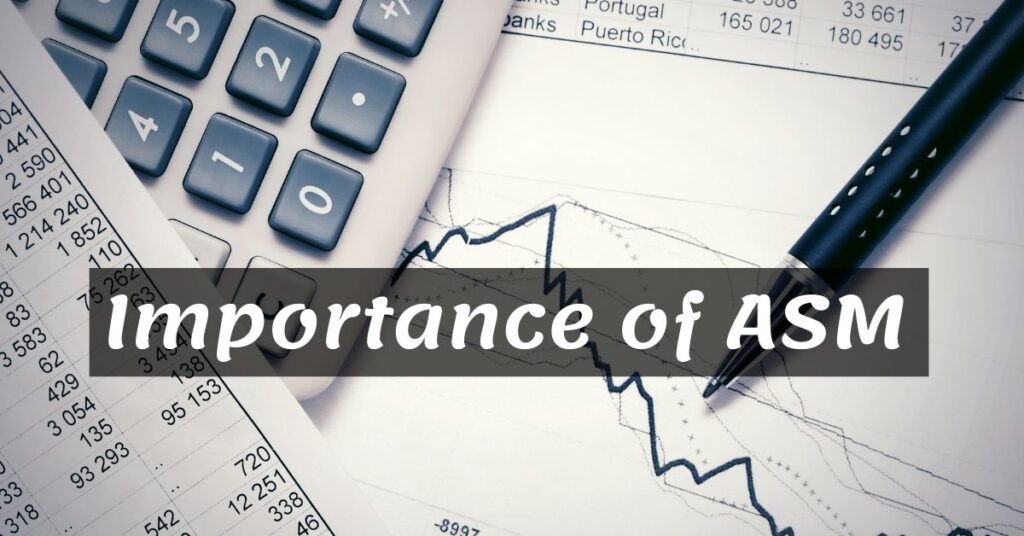ASM stands for Additional Surveillance Measure, and it is an initiative by the Securities and Exchange Board of India, or we know it as SEBI. Additional Surveillance Measure is an exchange initiative that mainly focuses on enhancing the market integrity and focuses on investors’ security. It doesn’t leave the individual investors as it safeguards the individual investor’s interest.
Let us know in detail what is ASM in stock market, but we should know some basic details of ASM before that.
What is ASM?
The stock market goes up and down with time. It is never easy to judge the duration for which the stock market will remain on the upper ground and similarly for the lower ground.
People usually find it difficult to invest in such conditions when the market is following a zig-zag path. Hence, to safeguard the investors from such bourses that impose curbs such as circuit filters and price bands, ASM is introduced by SEBI in India.
In general, when we talk about ASM, it can be termed as a surveillance method exchange imposes trading curbs in the Indian stock market.
During the present scenario of the stock market in India, there are mainly five criteria to determine a stock for Additional Surveillance Measure (ASM).
Let’s look at those five criteria below.
- During the last three months, the spread or the price variation between the high and low prices is 200 percent or less. In addition to this, the concentration in the stocks of the top 25 clients is either equal to 30 percent or more.
- There are two things in consideration at this point; the first is when the spread of 200 percent or more and the stock market price band hits 30 percent or more.
- This point is for such stocks that have a negative value of PE and simultaneously shown a price movement of 100% in the last 30 days of trading, and also the concentration of the top 25 clients is 30% or more.
- The stock of market capital over 500 crore rupees and the price has moved 100%; along with this, the spread is more than 200% in the last one year, and also greater than 50% in the last 90 trading days or 3 months.
- A stock with a market cap above ₹500 crore where the concentration of top 25 clients in a quarter is greater than or equal to 50% and five or more of these clients have 50% or more of their trading activity in it.
Read More: Best Stock Market Books
The stocks under the conditions mentioned above can be called under ASM, but there are some exemptions for the following by exchanges
- PSU’s.
- Security with derivative products.
- The stocks under the trade-to-trade segment.
You might wonder about the importance of ASM. Not to worry, we have discussed it in the next section.
Importance of ASM in Stock Market

ASM is really important, keeping in mind the volatility of the Indian stock market.
Let’s understand this with an example.
If today, a stock enters the surveillance list. After entering the ASM, it will be moved to a 5% price band on the next day, which means now its price can only move 5% upwards or downwards from the previous day’s closing level.
The stock that entered the ASM list will discontinue if it is found to break the law of 5%. We can easily conclude from this that the stock is under strict rules upon entering the ASM list.
Now assume that from the 5th day of trading, 100% of the margin money will be required to trade the stock, and if the PE ratio is moved above 100, the stock will come under the trade-to-trade settlement.
Read More: Stock Market Tips for Beginners
Also, if the PE ratio is less than 10 or the Nifty 500 index, then the stock is removed from the list.
Hence, we can say this discourages the intraday traders from trading, and the fight among these traders leads to a decrement in the price of the stocks that are seen as a drop in the price of the stock. To know more about the importance of ASM, you can join a good stock market course.
Why should we care about ASM?
Exchanges say that the stocks coming under Additional Surveillance Measure do not reflect the company’s condition, quality, and position.
Contrary to this, in the BSE 500 and Nifty 500 indices, these stocks under ASM are the defeated ones.
It looks like a panic situation is created to sell off the stocks coming under the surveillance list. Even if you think of it as not a panic situation, then also you will get stuck with that 5% band criteria.
Being an investor is not easy as you have to monitor the fluctuations, the variations, and the changes in the market to make the best investment, irrespective of the type of investor you are, a long-term investor or a short-term investor.
Conclusion
In the article, we covered one of the most important topics of the stock market, ASM.
It is always recommended to learn the complete details of the market before jumping into it. Half knowledge can lead to a great loss to the capital.
If you are a beginner, give yourself some time to learn from your mistakes. Also, you can join a stock market course to get a complete basic to advanced knowledge of the stock market.
I hope you cleared your doubt regarding the topic, and this will help you do better investing.
2 responses to “What is ASM (Additional Surveillance Measure)?”
Recent blog
Course
- Unlocking the Mysteries of Bull Markets: A Comprehensive Guide
- Understanding Blue Chip Stocks: Definition, Examples, and Investment Strategies
- Understanding Volatility: What Is Volatility in the Stock Market?
- What is SEBI: Role, Structure, and Powers
- Understanding Bear Market: Types, Causes, and Consequences






[…] Read More: What is Additional Surveillance Measure? […]
[…] Read More: What is ASM? […]